Asia is home to some of the oldest civilizations in the world, and as a result, has an array of landmarks that tell the stories of empires, religions, and revolutions.
Imagine walking in the footsteps of samurai at Japan’s imperial castles, or being awestruck by the intricate carvings of India’s ancient temples – quite epic eh?
That’s why we have decided to write this article on the most famous landmarks in Asia, so that you can get experience some of the magic without leaving your computer (or phone)!
1. Taj Mahal, India

When you first set your eyes on the Taj Mahal, its splendor is undeniable. This ivory-white marble mausoleum, situated in Agra, India, stands as a symbol of love and an architectural masterpiece of the Mughal era.
Commissioned in 1631 by Emperor Shah Jahan in memory of his wife, Mumtaz Mahal, the Taj Mahal’s beauty transcends time.
Key Highlights:
- Location: Agra, Uttar Pradesh, India
- Built by: Emperor Shah Jahan
- Year of completion: 1653
- Designation: UNESCO World Heritage Site (1983)
The Taj Mahal’s seamless blend of Persian, Islamic, and Indian architectural styles tells a story of cultural melting pot. As you walk through the lush gardens and into the main building, the intricate calligraphy and detailed inlay work showcase the craftsmanship of the artisans.
Features to Admire:
- The central dome, flanked by four smaller domes
- The minarets at each corner of the base platform
- The interior chambers adorned with precious stones
Your visit to the Taj Mahal won’t just be a glimpse into India’s rich history; it will be a journey through the finest expressions of love and dedication manifested through architecture.
2. Borobudur, Indonesia

When you step into the Kedu Valley in the southern part of Central Java, you’ll be greeted by the majestic sight of Borobudur, a symbol of Indonesia’s rich historical tapestry.
This grand Buddhist monument and UNESCO World Heritage site, a spiritual and architectural masterpiece, dates back to the 8th and 9th centuries, constructed under the Syailendra Dynasty’s patronage.
As you approach Borobudur, you’ll notice it’s composed of multiple stacked platforms, featuring a pyramid-shaped base with five concentric square terraces, topped by three circular platforms, and finally a monumental stupa at the center.
Each level corresponds to the stages of Buddhist cosmology, which I thought was quite fascinating.
Architectural Highlights:
- Total of 2,672 relief panels
- 504 Buddha statues
- 72 Buddha statues seated inside perforated stupa
The temple was designed to guide you from the realm of desire, through the world of forms, and into the formless world, ultimately reaching enlightenment as you ascend through the structure.
Don’t miss the intricate carvings that depict Buddha’s teachings and life, which not only serve as aesthetic elements but also as a means for education and contemplation for pilgrims.
Sadly, Borobudur was abandoned by the 16th century. However, it was rediscovered in the 19th century, rescued from volcanic ash and jungle growth. Today, it stands as Indonesia’s most visited tourist attraction and a place of pilgrimage for Buddhists during Vesak Day.
3. Fushimi Inari-Taisha, Japan

When you visit Kyoto, the striking torii gates of Fushimi Inari-taisha are a must on any Kyoto itinerary. This esteemed Shinto shrine honors Inari, the kami of rice and prosperity.
As you stroll through the thousands of vermilion gates, known as Senbon Torii (“thousands of torii gates”), the line between the spiritual and physical world seems to blur.
The gates trail through the woods, up the sacred Mount Inari, creating pathways that are both awe-inspiring and tranquil. Each gate, a donation by individuals or businesses, is a testament to devotion and hopes for prosperity. Here’s what to expect:
- Founded: 711 CE
- Dedication: Inari, kami of rice and prosperity
- Height of Mount Inari: 233 meters
- Walking Time: Approximately 2 hours to summit
- Trail Length: 4 kilometers through the mountain
4. The Great Wall of China, China

When you visit the Great Wall of China, you are witnessing more than just a wall; you are touching a piece of human resilience that has stood the test of time.
Constructed over several dynasties, this formidable structure stretches an astonishing 13,000 miles across northern China, offering a historic panorama that’s as impressive as its purpose.
Imagine the hands that built this fortification, stone by stone, to protect a civilization from invasions. Starting as early as the 7th century BC and expanded during the Ming dynasty (1368–1644 AD), the wall showcases various architectural styles and materials.
Quick Facts:
- Total Length: >13,000 miles
- Ming Great Wall Length: Approximately 5,500 miles
- Average Height: 23-26 feet
- Average Width: 13-16 feet
- Watchtowers: An estimated 25,000
With each visit, you’re honoring not just the wall itself, but the millions of individuals who labored over it through the centuries. Its scale and the ingenuity behind it reflect the enduring strength of Chinese culture.
The wall traverses through steep mountains and harsh deserts, and it is a landmark that takes multiple visits to fully appreciate.
5. Forbidden City, China
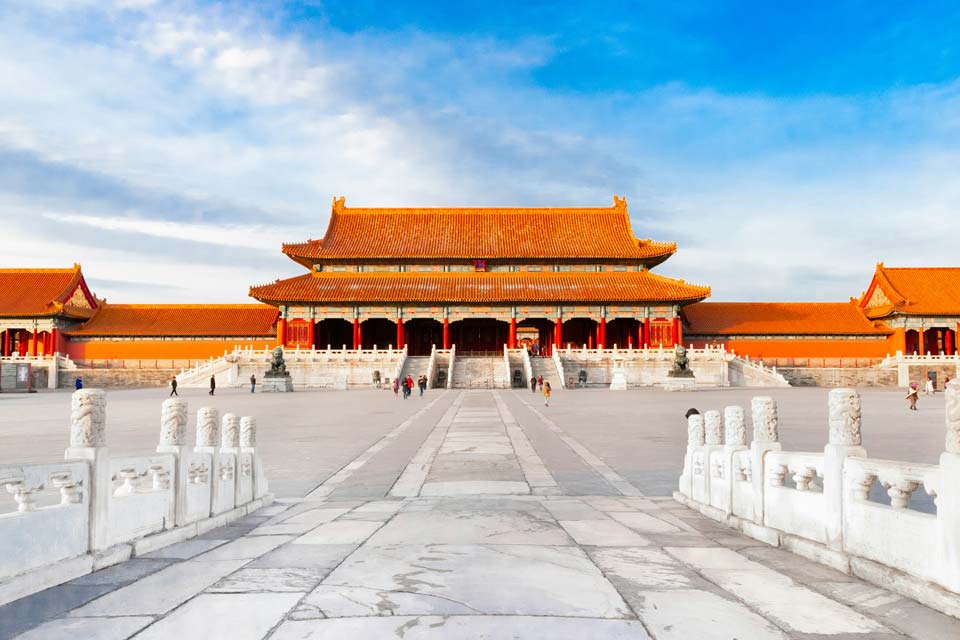
The Forbidden City is perhaps the most famous landmark in Beijing. Also known as the Palace Museum, this historic imperial palace served as the Chinese emperors’ home for nearly 500 years, from the Ming to the Qing dynasty.
The Forbidden City is the world’s largest palace complex, with 180 acres and 1000 buildings. As you walk through the maze of pavilions, gardens, and nearly 9,000 rooms, you’re stepping back in time, tracing the footsteps of emperors and their courts.
As a foreigner, make sure you get a guide or audio guide. There is so much history, stories and symbolism behind the architecture and art that you’ll miss without a guide.
6. Petra, Jordan

No list of the most famous landmarks in Asia is complete without mentioning Petra, one of the New Seven Wonders of the World.
Petra, often referred to as the Rose City due to the pinkish hue of its rock, was once the capital of the Nabataean Kingdom.
Archaeologists believe it was established as early as the 4th century BC. You’ll marvel at Petra’s most famous structure, The Treasury (Al Khazna), whose intricate façade is carved directly into the sandstone.
Here’s what you should not miss:
- Al Siq: The main entrance to Petra, a narrow gorge flanked by walls soaring up to 80 meters.
- The Monastery (Ad Deir): A monumental building carved out of rock, rivaling The Treasury in grandeur.
- The Royal Tombs: A series of grand tombs carved into the mountainside, reflecting a mix of Nabataean and Hellenistic architectural styles.
7. Mount Everest
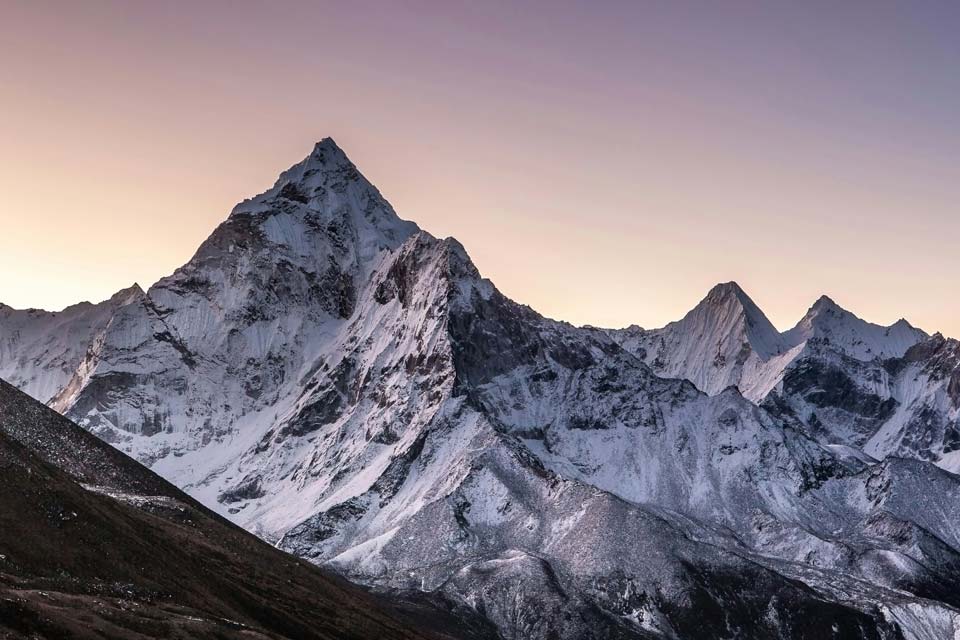
You may have heard about Mount Everest, the colossal peak that embodies the epitome of adventure and the spirit of human endurance.
Named Sagarmatha by the locals, which translates to ‘Forehead in the Sky’, this giant stands tall on the border between Nepal and Tibet.
At 8,849 meters (29,032 feet) above sea level, Everest is not just the highest mountain on Earth but also a natural divider between countries and cultures.
For your bucket list of famous Asian landmarks, Everest is more than a mountain; it’s a magnificent journey that captures the bold human spirit to reach for the highest point on Earth.
Just remember, while Everest draws many adventurers, it is still a dangerous place that only the most prepared people should visit!
8. Komodo National Park, Indonesia
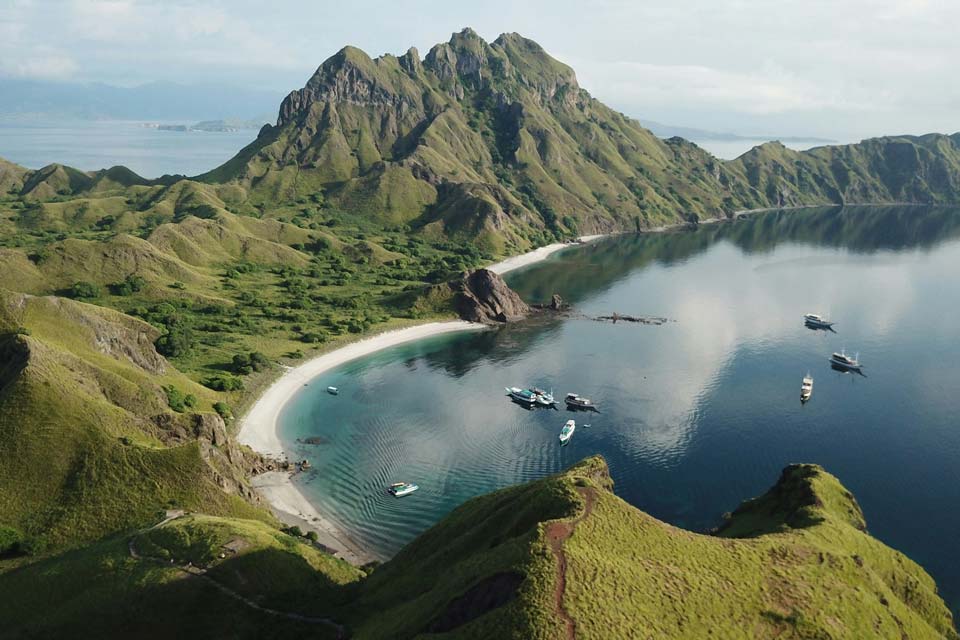
Komodo National Park is one of the most unique places in the world where prehistoric creatures roam the landscapes and tropical breezes greet you from the crystal-blue waters. It is home to the majestic Komodo dragon – the largest living lizard on our planet. They can often grow up to a staggering 10 feet!
In addition to the iconic Komodo dragons, the park is home to diverse marine life, including coral reefs, manta rays, sharks, and over 1,000 species of fish.
Visitors can explore the park through guided tours, trekking, and snorkeling, experiencing this stunning destination’s unique natural beauty and wildlife.
9. Burj Khalifa, Dubai
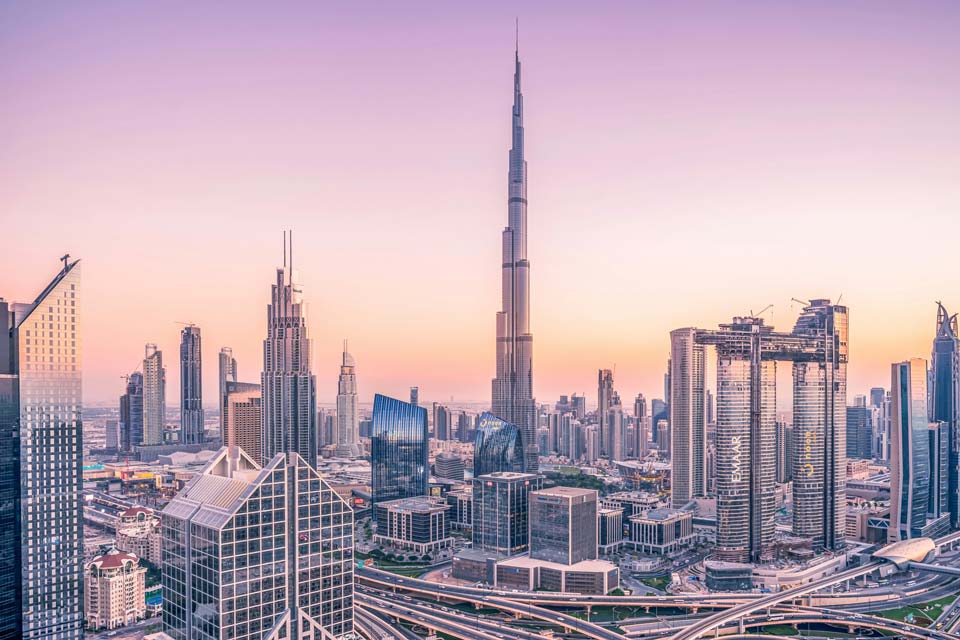
Imagine standing at the foot of the Burj Khalifa, the tallest structure on the planet. Your eyes dart 828 meters upward—roughly the height of a 160-story skyscraper, and for a moment, you have to remind yourself you are still on Earth.
Completed in 2010, the Burj Khalifa has become the quintessential landmark of Dubai’s skylines.
The colossal effort behind its construction involved around 330,000 cubic meters of concrete, 39,000 m/t of reinforced steel, and 103,000 square meters of glass.
You can enjoy a bird’s eye view of the city from its observation decks on the 124th and 148th floors—the latter being the highest in the world.
If you’re a first-time visitor, make sure to purchase your Burj Khalifa tickets ahead of time, especially if you are planning on visiting during sunrise or sunset. These are the most popular times to go because the views are so much better with the beautiful hues of the rising or falling sun.
10. Petronas Twin Towers, Malaysia
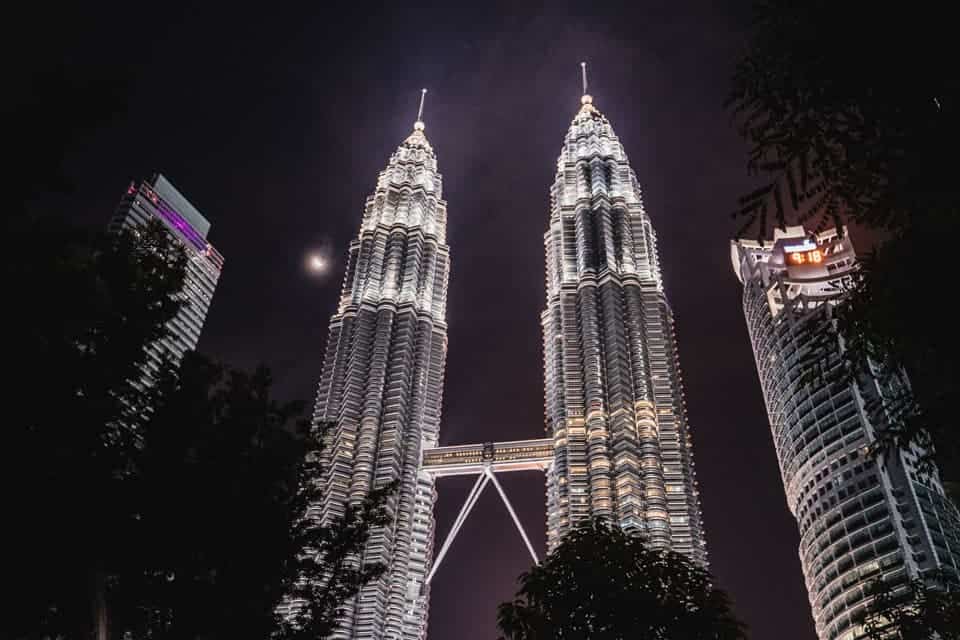
As you explore the skyline of Kuala Lumpur, Malaysia, the Petronas Twin Towers is one that you’ll undoubtedly notice.
Completed in 1998, the design by Argentine-born architect Cesar Pelli has proudly held the title of the world’s tallest building until 2004, when Taipei 101 was built.
The towers are not just tall but also a marvel in design, each featuring an eight-lobed circular structure, inspired by Islamic art, reflecting Malaysia’s Muslim heritage. This shape also provides stability and a stylish aesthetic.
Make sure you don’t miss this on your Kuala Lumpur itinerary!
11. Angkor Wat, Cambodia
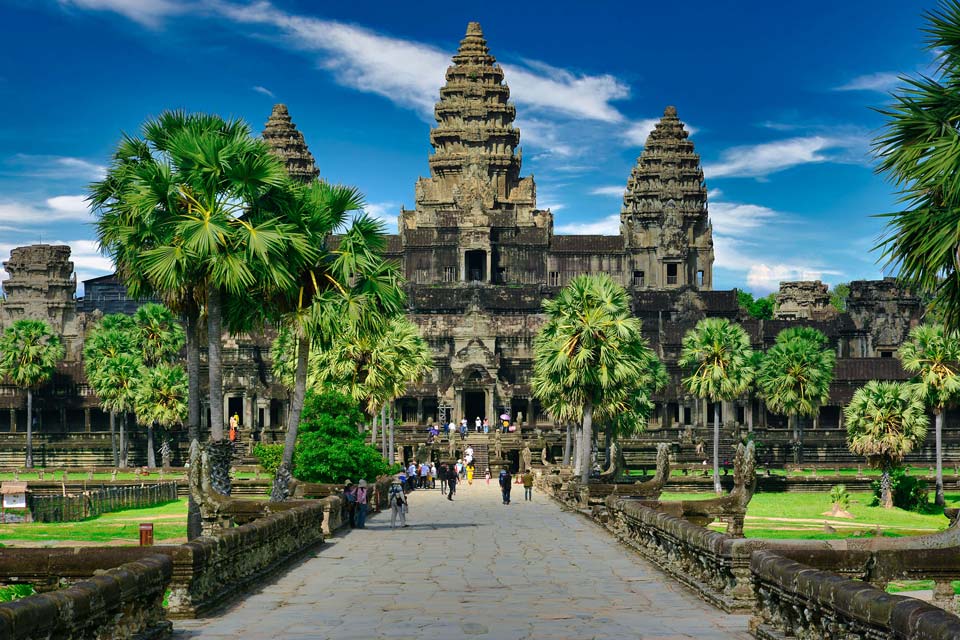
Angkor Wat is unquestionably one of the most important religious landmarks in Asia. Located in northern Cambodia, it is the largest religious monument in the world.
Originally constructed in the 12th century as a Hindu temple dedicated to Vishnu, this iconic site later transitioned to a Buddhist temple, reflecting the region’s historical religious shifts. The complex spans over 400 acres, a testament to the might of the Khmer Empire.
When visiting, you’ll encounter Angkor Wat’s three-level central temple, which rises majestically within a grand moat and intricately carved galleries. The temple’s outer wall encapsulates not just the main sanctuary but also libraries, pavilions, and lush courtyards.
To experience the temple in its full glory, arrive early for a sunrise visit. The early morning light bathes the towers and carvings in a stunning golden hue, perfect for photography.
12. Marina Bay Sands, Singapore

Marina Bay Sands is an icon that has shaped the Singapore skyline since its opening in 2010 with its unique design featuring three soaring towers topped by a massive boat-shaped structure.
This landmark isn’t just an architectural marvel with its stunning rooftop infinity pool and breathtaking views of the city. It also serves as a resort offering an array of attractions:
- Hotel: 2,561 luxurious rooms await your stay, offering impeccable service and amenities.
- Casino: Try your luck at the sprawling casino, a gamers’ paradise.
- Shopping: The Shoppes at Marina Bay Sands offers a large collection of high-end stores and exquisite boutiques.
- Dining: You’re spoilt for choice with a plethora of restaurants, from celebrity chef dining experiences to delicious street food.
- Entertainment: The integrated resort boasts a concert hall, theatres, and nightclubs.
Whether you’re marveling at the modernity of the hotel towers or exploring the luxury within, there is something to do at Marina Bay Sands for everyone.
13. Cu Chi Tunnels, Vietnam
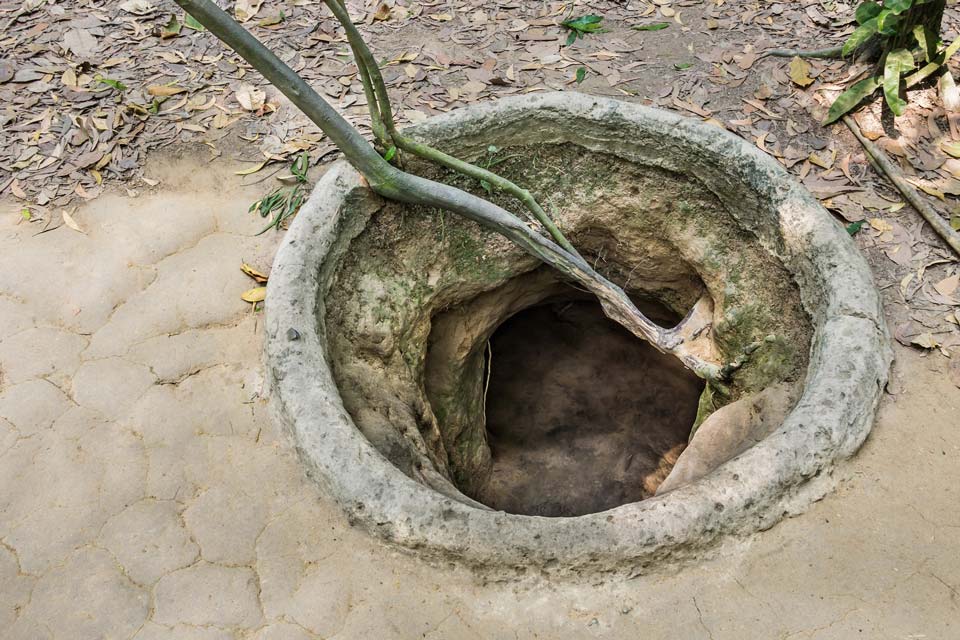
The Cu Chi Tunnels, located near Ho Chi Minh City, Vietnam, offers a profound glimpse into Vietnam’s turbulent past. These tunnels are renowned for their role during warfare, notably the Vietnam War.
Initially built during the struggle against French colonialism, the tunnels were later expanded. Their use peaked in the 1960s and 1970s, serving as living quarters, supply routes, and hospitals for Vietnamese fighters.
They spanned an incredible 250km with multiple levels, some parts of the system reach depths up to 12m underground.
14. Grand Palace, Thailand

No list of Asia’s most famous landmarks is complete without the Grand Palace in Bangkok. This awe-inspiring complex is not just a feast for the eyes but also a significant symbol of Thai culture and history.
Since 1782, the Grand Palace has been the official residence of the Kings of Siam and continues to be a site of royal ceremonies and state functions, even though the royal family moved to Dusit Palace in the early 20th century.
Within the complex, visitors can explore several epic buildings, including the Wat Phra Kaew (Temple of the Emerald Buddha), which houses a revered carved figurine of the Emerald Buddha.
The Grand Palace also encompasses various throne halls, pavilions, and courtyards, each showcasing the opulence and grandeur of Thai craftsmanship and design! Just remember to start your visit early. It is a big complex and visiting takes a long time!
15. Taipei 101, Taiwan
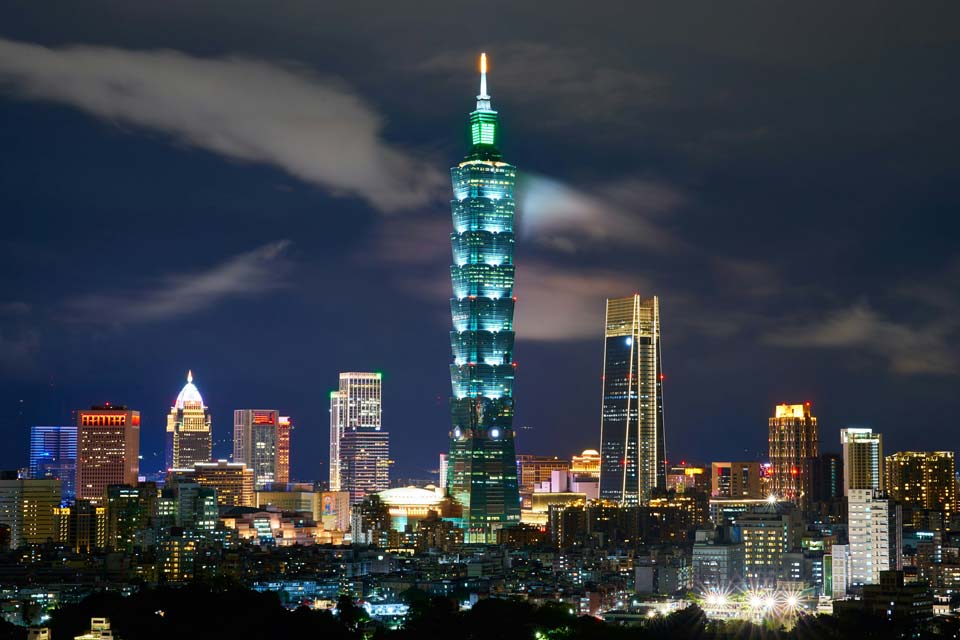
Last but not least on our list is the most famous landmark in Taiwain – Taipei 101. It held the title of the world’s tallest building from 2004 until the completion of the Burj Khalifa in Dubai in 2010. But now it is only the 11 tallest buildings in the world.
The tower’s design is a fusion of modern and traditional elements, drawing inspiration from ancient pagodas and bamboo, symbolizing growth and prosperity.
One of the key factors contributing to its fame is its unique architectural design, which incorporates elements of feng shui and traditional Taiwanese symbolism. Taipei 101 is also known for its sustainable and environmentally friendly features, such as its energy-efficient design and use of recycled materials.
For travelers, the building’s observatory offers panoramic views of the city, providing visitors with a stunning perspective of Taipei’s urban landscape and surrounding mountains.
Final Thoughts
From the ancient wonders of the Great Wall of China and the majestic Taj Mahal to the modern marvels of Marina Bay Sands and Taipei 101, Asia is home to a diverse number of iconic landmarks that capture the region’s rich history, cultural heritage, and technological innovation.
So next time you plan your trip to Asia, make sure you put some of them on your itinerary!
